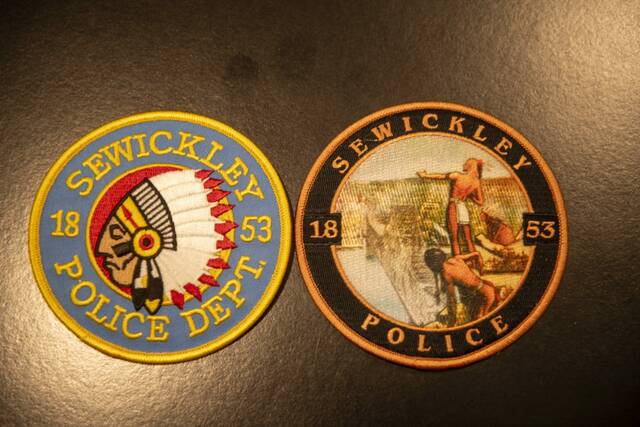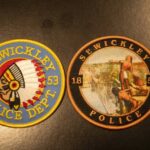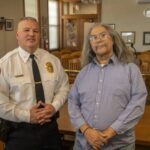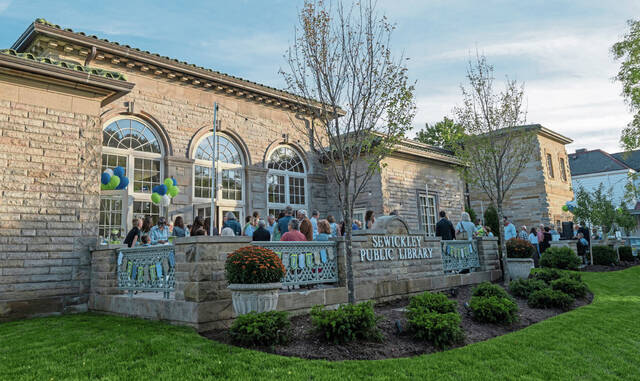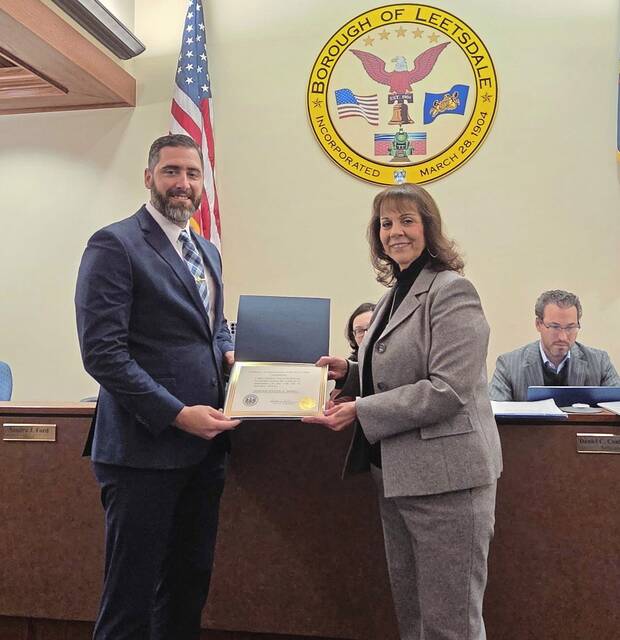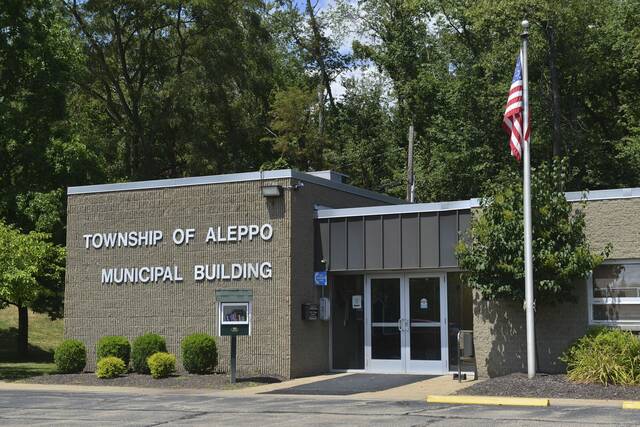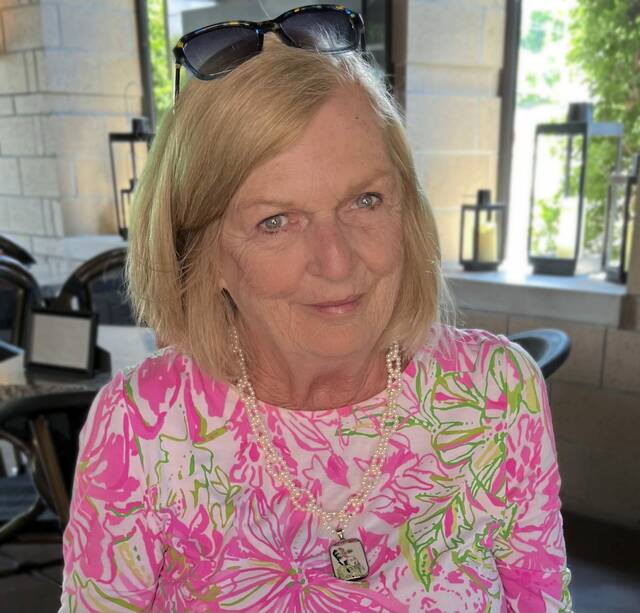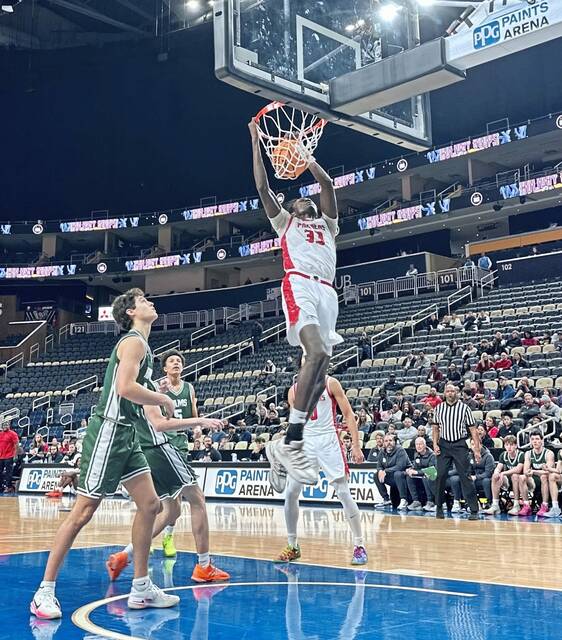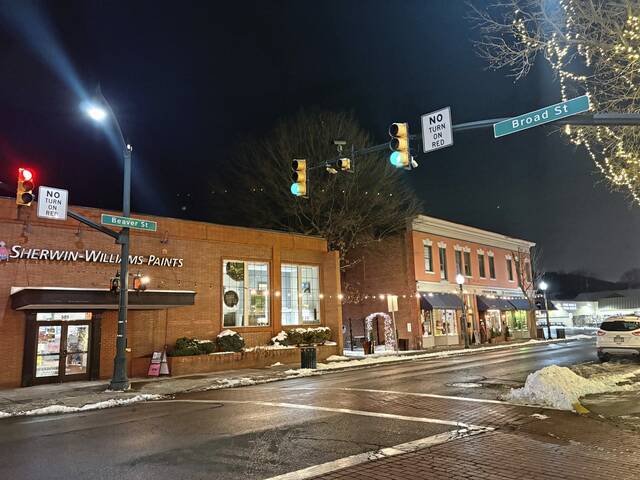When Sewickley police Chief Dave Mazza was told his department’s uniform patches were problematic, the law enforcement veteran set out on a mission to correct them.
What resulted was a nearly yearlong journey of discovery and the creation of a new patch with the help of a Pittsburgh-based social service agency.
The old patch, which has been on Sewickley officers’ shoulders since at least the 1970s, featured an artist’s rendering of the head of a Native American wearing a headdress, or feather warbonnet, in the middle of a red circle.
Its feathers stretched into a light blue circle with yellow lettering that read “Sewickley Police Dept. 1853.”
“There were some emails sent where people expressed their opinion that simply displaying the (American) Indian was racist and offensive,” Mazza said.
The chief sought assistance through the Council of Three Rivers American Indian Center in an effort to make the patch better.
Miguel Sague, one of the center’s board members and community outreach representative, said the patch was not offensive but inaccurate. The headdresses were not traditionally worn by tribes in Pennsylvania and on the East Coast.
“That seems to be the thing that everybody wants to look at when they think Indians,” said Sague, a Penn Hills artist and descendent of the Caribbean-based Taino tribe. “They want to see that feather bonnet. It’s not from here.”
Sague and Mazza worked for months on drafts of a new patch.
The new version draws inspiration from late Sewickley artist Audley Nicols, who was commissioned to make posters for the opening of the Sewickley Bridge, which connects the borough across the Ohio River to Coraopolis and Moon Township.
The poster from September 1911 featured three barely clothed Native Americans on rocks overlooking the bridge from the Coraopolis side.
It can be found on the Sewickley Valley Historical Society’s website, along with more information about the bridge.
Sague said that image was a good start, but the person farthest to the right was shown wearing a warbonnet.
“I took the bonnet off his head,” Sague said. “I shaved his head because he had braids, and I gave him a traditional Seneca haircut.”
The Seneca were the largest of six Native American nations and the dominant group in Western Pennsylvania.
Sague also put a gustoweh, which is a traditional Seneca cap with numerous feathers and one large eagle feather sticking out of the top, on one of the other natives.
Mazza and Sague also reviewed images from artist Robert Griffing before settling on the final design.
“He’s dedicated his whole life to creating images of historically accurate Western Pennsylvania natives,” Sague said. “I sent that stuff to Dave and he said, ‘OK. Looks like Miguel knows what he’s talking about.’ “
Mazza said the Sague and the center have been wonderful to work with and really embraced what he was trying to accomplish.
“History’s always been important to me,” Mazza said. “I needed some help and guidance to make it historically correct to properly represent this police department, and so the police department could properly represent what most of this town is about.
“It’s about the history of the Indians that once inhabited the Sewickley area. I was lucky enough to meet Miguel and get some serious guidance and serious history lessons.”
Sague lauded Mazza and his department for their initiative.
“This is actually not an uncommon experience for us. I do a lot of community outreach work for the Indian Center. There’s a lot of interest in the communities around Southwestern Pennsylvania to get things right, historically correct. They don’t want things to shock people that know what’s going on,” Sague said. “They want what’s happening in their community to represent their community favorably and the community in a positive way.
“When we got this from Sewickley, it did not surprise us. Talking to David, I could tell he was obviously a cool guy. He knew what he wanted. It was obvious that the community was backing him up. For me, it was a thrill. It was a real favorable experience.”
The new patch was first on display at Sewickley’s Light Up Night celebration Dec. 6.
Sewickley has 11 full-time and 10 part-time officers. All have the new patches.
Mazza said he received positive feedback from Allegheny County Police and others in law enforcement.
He gave patches and challenge coins with the new look to council on Dec. 10.
“The new patch is beautiful,” council President Cynthia Mullins said. “I’m so glad Chief Mazza got input from a representative of the Indigenous community to guide us in what is historically correct.”
The chief also surprised Sague with a plaque featuring the new patch look at the council meeting.
Mazza said the patch before the 1970s version was just an image of a keystone that said Sewickley Police.
Mazza said he could not find any records or explanation of how the blue and yellow patch with the Native American drawing was created.
“I couldn’t find a single thing, and I did search high and low,” Mazza said. “There’s just nothing available. When I learned that, it struck me that I needed to start documenting as far back as I can remember so there is some history after I’m gone that people can follow and learn about our police department.”


